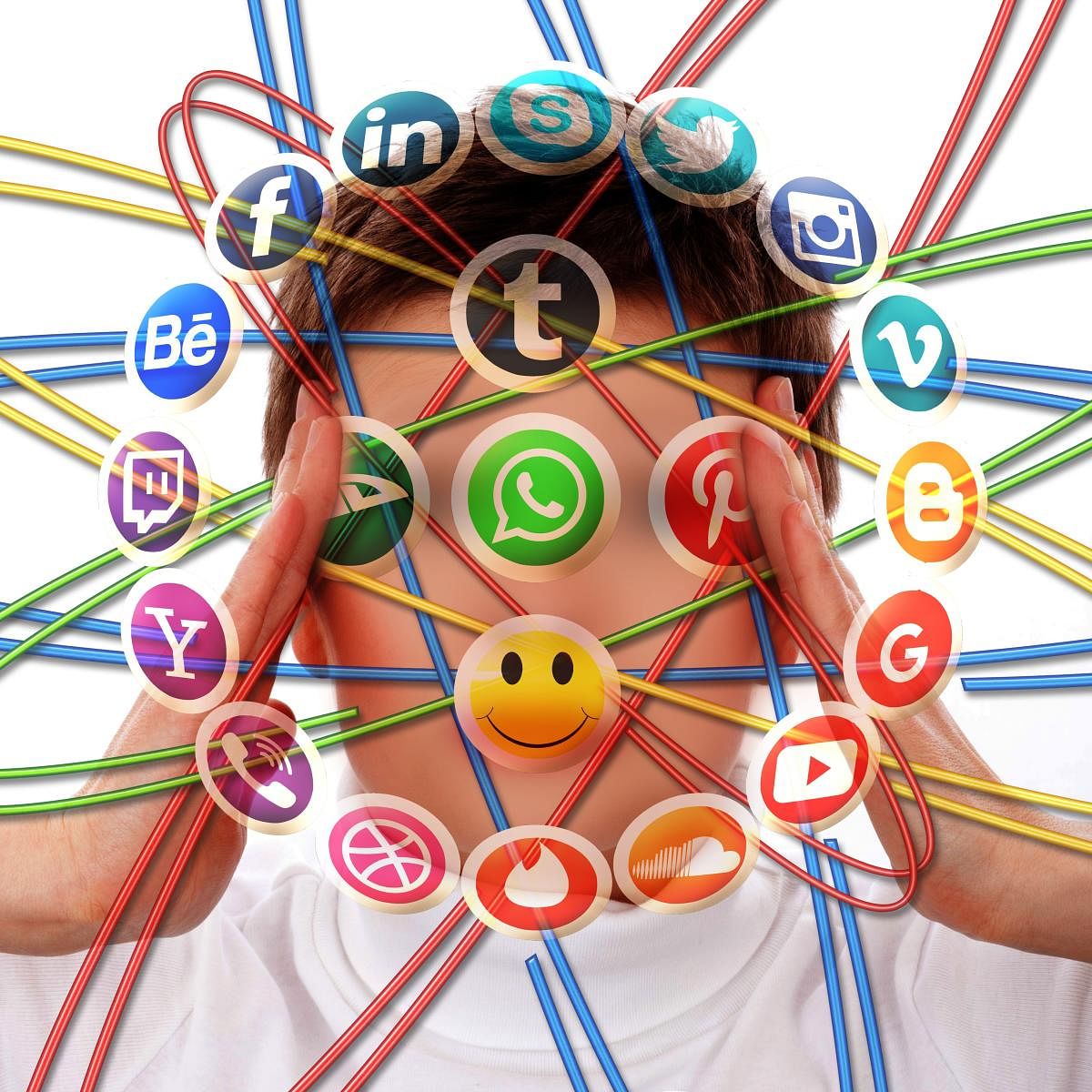
Social media is defined as a form of electronic communication through which users create online communities to share information, ideas, personal messages, and other content in order to stay connected. This medium is supposed to have social underpinnings. Regrettably, it has resulted in what has come to be known as “virtual hyperconnectivity”. It has lost its “social” context, for which it was designed in the first place. “Reel” has replaced the “real” with consummate ease.
The common symptoms of internet addiction include excessive usage, experiencing withdrawal symptoms upon being disconnected from the internet, development of tolerance, using the internet despite harmful consequences, difficulty in maintaining interpersonal relationships with family and friends, social isolation, fatigue etc. Three sub-types of this disorder exist: excessive gaming, sexting, preoccupations with e-mail usage. Christina (name changed) presented to me saying that she was not having as much fun as her friends and colleagues. She constantly kept a tab on what her friends were doing by visiting their social media accounts. Christina’s anxious behaviour falls under the realm of Fear Of Missing Out (FOMO). These individuals fear that they are missing out on the fun, and keep a compulsive check on their friends via social media to keep themselves updated about all the happenings. Some people keep logging into their social media accounts to see the kind of attention their post or picture has received. Some even go to the extent of comparing the number of “likes” their post has got, as opposed to their friends’ posts. Every time someone likes their post, a chemical called dopamine spikes in the brain reward system, and this is responsible for feelings of pleasure and happiness. Abnormal brain reward processing forms the basis of all addictive behaviour. A large number of teenagers are seeking treatment for internet addiction disorder during this ongoing pandemic. Akin to any other form of substance dependence, this too can present with withdrawal symptoms like irritability, anxiety, rage, sleeplessness, feelings of chronic dissatisfaction and hostility. These negative emotional states are experienced upon being disconnected from the net, a classical sign of the phenomenon of withdrawal.
To begin with, one gets a high from limited online interaction and appreciation. One may limit oneself only to a handful of online platforms. As time passes, one craves more sophisticated software, a greater number of social networking sites, better connectivity, and the compelling need to spend more time on these platforms. This is because the initial attention and appreciation received begins to feel as being inadequate. This phenomenon can be likened to the development of “tolerance”. That is, the initial pleasure experienced upon savouring a drug (or doing a behaviour) follows a downhill course, which requires the (ab)user to use more and more of the drug to experience less and less pleasure, in the futile and vain hope of getting the same old high. Internet addiction has also paved the way for restlessness, anger, palpitations, tremors; all seen upon not being able to connect to the internet. These are nothing but classical withdrawal symptoms. Such a level of dependence is bound to affect one’s interpersonal relationships. Unfortunately, dependent persons continue to be dependent on their substance or behaviours despite experiencing physical and psychological repercussions. It is no surprise then that mental health professionals are seeing CEOs, innovators, teenagers and top honchos battling symptoms of anxiety and depression. The Internet has also given rise to promiscuity and cyberbullying. Psychiatrists have begun to see victims of cyberspace in the form of being blackmailed and bullied online. The following could offer the way forward:
Parental mediation: A tectonic shift in the attitudes of modern-day parents is warranted. They should rigidly restrict the screen time of their children. Screen time encompasses the time spent watching TV, playing online games, using smartphones and other virtual media. Experts recommend curtailing the screen time to less than an hour per day.
Encourage physical activity: New age kids have to battle obesity which was unheard of in the earlier generation. Regular physical activity will release endorphins which are responsible for feelings of pleasure and happiness. Clinicians advise their clients to obtain their ‘high’ from healthier alternative sources such as exercise and yoga.
Cognitive Behavioural Therapy (CBT): In those diagnosed with an internet addiction disorder, CBT is the first line of treatment that is offered. It involves “cognitive restructuring” a process of identifying cognitive errors and correcting them to bring about an attitudinal shift in the individual.
Pharmacotherapy: If the withdrawal symptoms are severe enough to cause functional disability and secondary depression, short term supervised use of anti-depressants may be recommended under expert vigil.
Social networking sites are not an awful lot. For the discerning individual, they have their pros and obvious advantages. However, the vulnerable populace (teenagers) fail to exercise restraint and become victims of this obsession. The aphorism prevention is better than cure couldn’t have been applied to a better platform!
(The author is a mental wellness expert & senior consultant psychiatrist.)